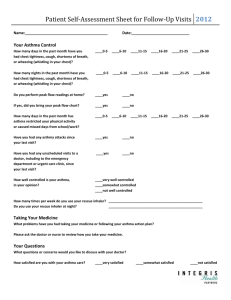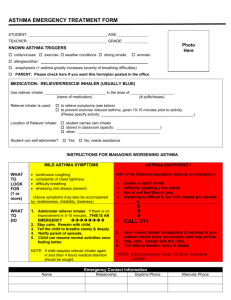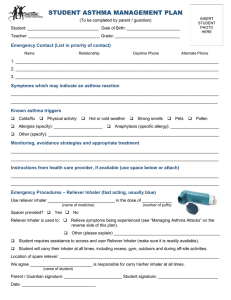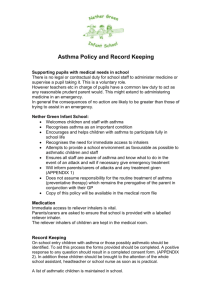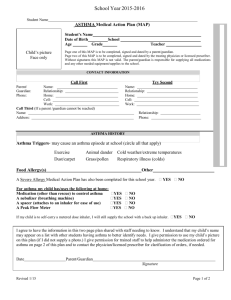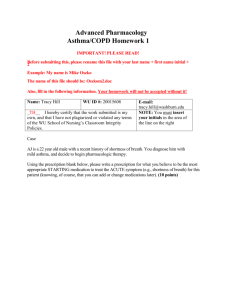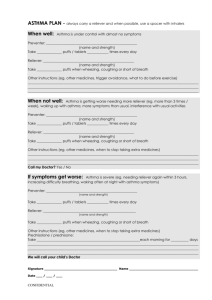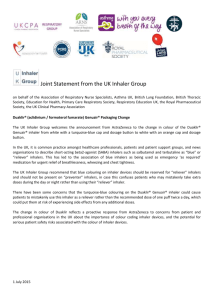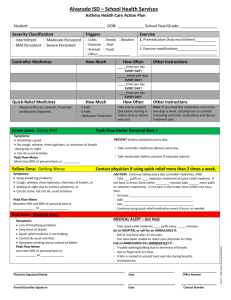Children with Asthma - Guidelines
advertisement
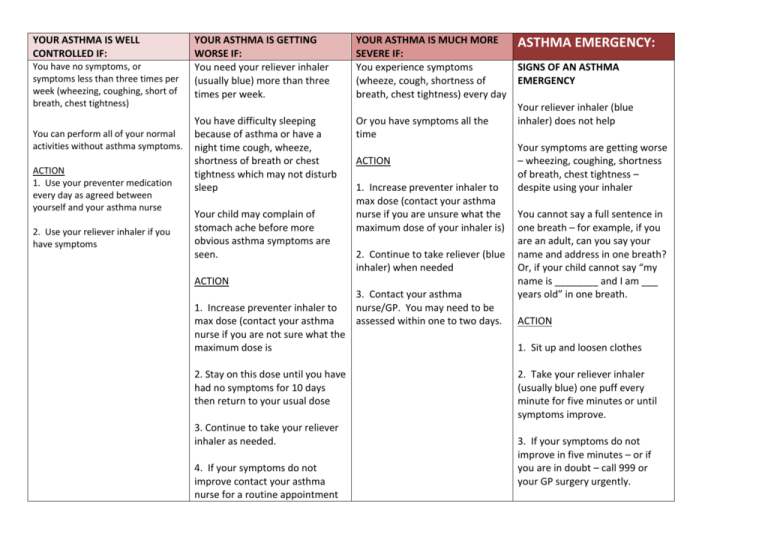
YOUR ASTHMA IS WELL CONTROLLED IF: You have no symptoms, or symptoms less than three times per week (wheezing, coughing, short of breath, chest tightness) You can perform all of your normal activities without asthma symptoms. ACTION 1. Use your preventer medication every day as agreed between yourself and your asthma nurse 2. Use your reliever inhaler if you have symptoms YOUR ASTHMA IS GETTING WORSE IF: You need your reliever inhaler (usually blue) more than three times per week. You have difficulty sleeping because of asthma or have a night time cough, wheeze, shortness of breath or chest tightness which may not disturb sleep Your child may complain of stomach ache before more obvious asthma symptoms are seen. YOUR ASTHMA IS MUCH MORE SEVERE IF: You experience symptoms (wheeze, cough, shortness of breath, chest tightness) every day Or you have symptoms all the time ACTION 1. Increase preventer inhaler to max dose (contact your asthma nurse if you are unsure what the maximum dose of your inhaler is) 2. Continue to take reliever (blue inhaler) when needed ACTION 1. Increase preventer inhaler to max dose (contact your asthma nurse if you are not sure what the maximum dose is 2. Stay on this dose until you have had no symptoms for 10 days then return to your usual dose 3. Continue to take your reliever inhaler as needed. 4. If your symptoms do not improve contact your asthma nurse for a routine appointment 3. Contact your asthma nurse/GP. You may need to be assessed within one to two days. ASTHMA EMERGENCY: SIGNS OF AN ASTHMA EMERGENCY Your reliever inhaler (blue inhaler) does not help Your symptoms are getting worse – wheezing, coughing, shortness of breath, chest tightness – despite using your inhaler You cannot say a full sentence in one breath – for example, if you are an adult, can you say your name and address in one breath? Or, if your child cannot say “my name is ________ and I am ___ years old” in one breath. ACTION 1. Sit up and loosen clothes 2. Take your reliever inhaler (usually blue) one puff every minute for five minutes or until symptoms improve. 3. If your symptoms do not improve in five minutes – or if you are in doubt – call 999 or your GP surgery urgently.


